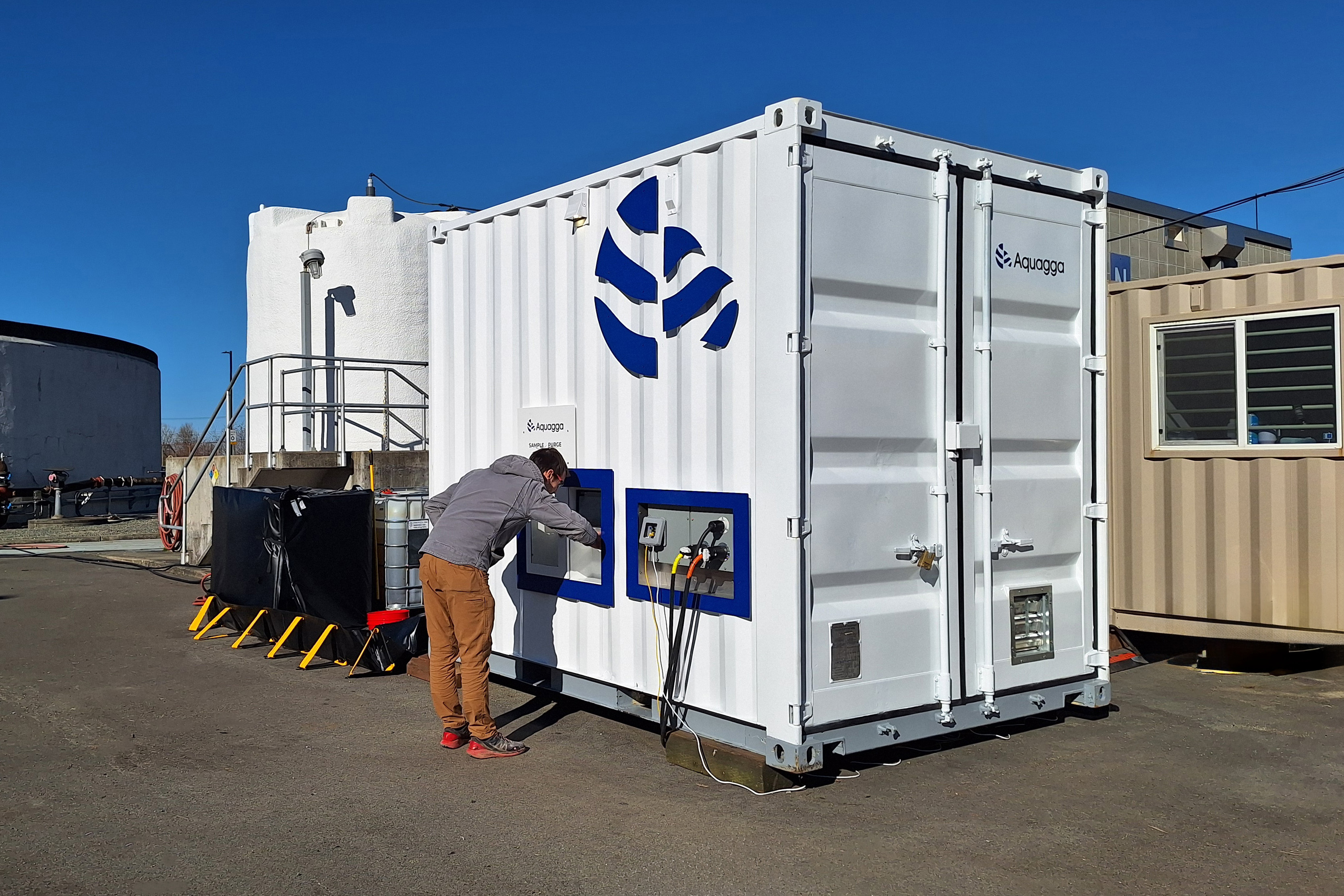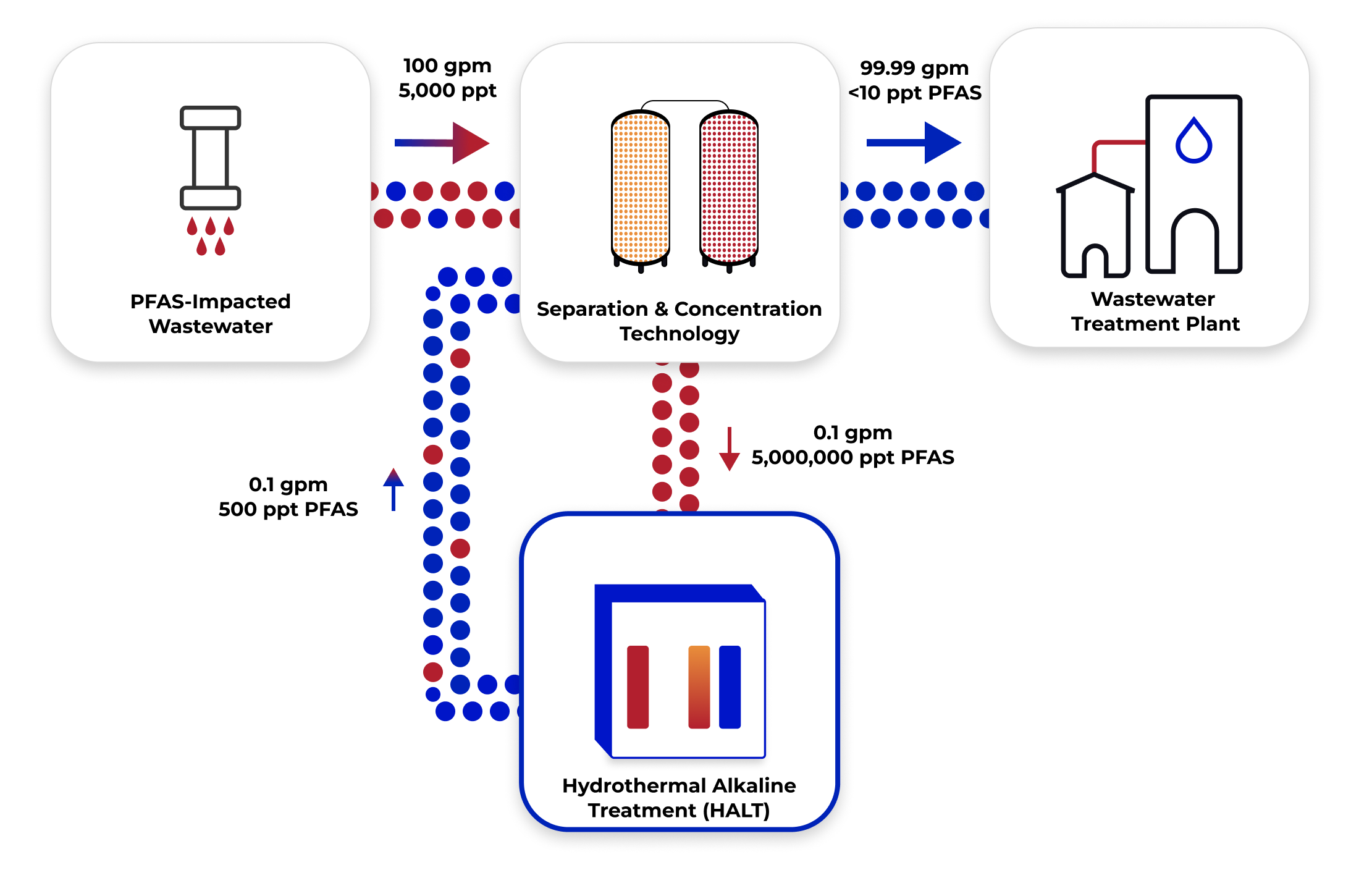
Traditional water treatment methods such as adsorptive media and membranes are able remove PFAS down to non-detect levels and meet increasingly stringent regulations. However, these technologies produce PFAS-containing solid waste or concentrated liquid streams that need to be sent elsewhere for incineration or disposal. In other words, the PFAS haven’t gone away. The ongoing operational costs and liability risks remain, too.
Due to the molecular composition of PFAS and their persistence in nature, removing them completely from wastewater or from the environment is difficult. Fortunately, destructive technologies such as hydrothermal alkaline treatment (HALT) are helping to break the PFAS cycle in wastewater treatment. They do this by “closing the loop” and ensuring that no PFAS leaves the treatment site.
The first thing to understand is that 99 to 99.99% of the wastewater volume can be treated using technologies that capture or separate the PFAS from the water. Technologies such as regenerable ion exchange resins (IXR), evaporation, nanofiltration, reverse osmosis membranes, and foam fractionation serve this purpose. This is how overall wastewater discharge goals are met.
After wastewater is processed through the above separation and concentration steps, a tiny fraction of the water volume remains. Yet the total amount of PFAS is still there. This low volume, highly concentrated PFAS waste stream has to be properly handled.
Traditional options for disposal of this waste stream include solidification and return to the landfill, incineration (yes, of water!), and deepwell injection. These methods are well established and widely used to treat large volumes of contaminated liquid waste. Depending on the location, they are often the most economical option.
However, things are changing. In 2024 the US EPA designated PFOA and PFOS as hazardous substances under CERCLA, creating regulatory challenges and increasing costs at landfills. Incineration has the challenges of limited capacity, increasing costs, and uncertainty around air emissions and potentially harmful byproducts. Deepwell injection remains an economical option for those with access to a nearby facility, but waste managers are increasingly evaluating transport costs and the operational challenges of managing the continuous removal of truckloads of contaminated liquids.
Liability is a major concern for manufacturers whose wastewater contains high levels of PFAS, including short and ultra short-chain PFAS. Litigation related to PFAS contamination is widespread in the United States and growing around the world. In the absence of clear and predictable regulations about PFAS disposal, commercial entities are choosing to manage their PFAS risk on their own. On-site destruction of PFAS solves the PFAS disposal problem.
Closing the loop takes advantage of the principles of concentration and bulk destruction of PFAS. Through various treatment technologies in sequence, the volume of the PFAS-impacted wastewater stream is reduced by a factor of 1000 or more. As shown in the diagram (below), an original feed of 100 gallons per minute (gpm) can be reduced to 0.1 gpm of concentrated liquid using a suitable concentration technology.
This 0.1 gpm waste stream contains PFAS concentrations that are 1000 times the original PFAS concentrations. For example, an average PFAS concentration in landfill leachate of 5,000 ppt becomes ~5,000,000 ppt after foam fractionation. This is an efficient and economical concentration of PFAS to run through a 0.1 gpm continuous flow HALT system.
HALT processing destroys and defluorinates up to 99.99% of the PFAS in this concentrated stream. The persistent carbon-fluorine bonds are broken, significantly reducing PFAS concentrations and eliminating a substantial quantity of PFAS on a mass-basis. This process leaves a salty liquid effluent with trace residual PFAS concentrations often lower than the concentrations in the original wastewater feed. The complete destruction of PFAS via HALT has been evaluated and proven using multiple analytical techniques.

In the above example, the liquid effluent from HALT would contain final PFAS concentrations of ~500 ppt. The HALT effluent is then blended with the original, untreated wastewater stream, adding 0.1 gpm (0.1%) to the original flow of 100 gpm and PFAS concentrations that are lower than the untreated landfill leachate. The wastewater treatment process continues indefinitely in this closed-loop cycle.
With closed-loop PFAS treatment, wastewater discharge goals are met, PFAS are destroyed forever, and gone are the complications and liability related to off-site disposal of PFAS. Please contact our team at Aquagga to learn more.